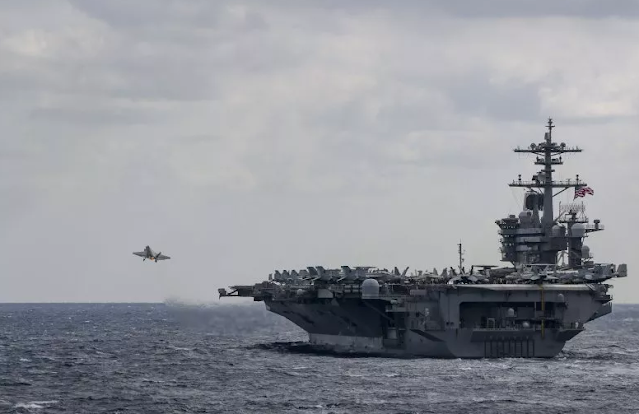A fighter pilot ejected safely from a plane on Monday after the jet crashed while returning to a carrier in the South China Sea, the US Navy said.
US at Pearl Harbor According to the Pacific Fleet, seven sailors aboard the aircraft carrier USS Carl Vinson were injured during the "landing accident". Three of them required medical evacuation to Manila in the Philippines, while the remaining four were treated onboard. All are in a stable condition, including the pilot of the F-35C Lightning II.
The accident occurred while the carrier was "conducting routine flight operations in the South China Sea," the statement said. The pilot of an F-35 attached to Carrier Air Wing Two was recovered by helicopter as part of the Carl Vinson Carrier Strike Group. "Additional details and the cause of the flight accident are being investigated," the Navy said.
The F-35 is America's fifth generation multirole stealth fighter. The carrier-based F-35C operates using a "catapult-assisted take-off but arrest recovery"—or CATOBAR—system, which launches aircraft with a catapult and recovers them using arrester wires. Is.
Monday's incident occurred on the second day of a naval exercise involving the USS Carl Vinson and fellow Nimitz-class aircraft carrier USS Abraham Lincoln. The carriers, carrying about 20 F-35Cs between them, were fought in the South China Sea on Sunday, after six days of exercises with Japanese forces in the western Pacific, south of Okinawa. The arrival of the two carrier strike groups attracted a large fleet of Chinese warplanes, which were found in the skies southwest of Taiwan.
According to relevant public announcements, US naval forces are currently stationed in the Indo-Pacific. The ongoing dual-carrier exercise near sea areas claimed by China is yet another sign that despite pressing security obligations in Ukraine amid its standoff with Russia, the US sees Asia as its priority theater of operations .
Announcing the start of dual carrier operations in the South China Sea, Carl Vinson-led Carrier Strike Group 1 Public Affairs said on Monday: "The ships and aircraft of the two carrier strike groups, with more than 14,000 sailors and marines, coordinated will conduct surface and air operations in a complex maritime environment, demonstrating the capability of the US Indo-Pacific Command Joint Force to deliver a powerful maritime force."
“Training with Carrier Strike Group 1 in the South China Sea is a very valuable opportunity. Such operations allow us to improve our combat credible capability, reassure our allies and partners, and ensure regional stability. to demonstrate our resolve as a Navy." Impact," said Rear Admiral Jeffrey Anderson, who commands Carrier Strike Group 3, led by Abraham Lincoln.
The two carrier groups will drill into objects including anti-submarine warfare, air warfare, replenishment-at-sea, cross-deck flight operations and maritime intercept operations, the statement said.
Although the exercises take place in international waters, Beijing sees frequent deployments as specifically targeting its capabilities. At a meeting of Chinese and US military officials in December, China said it sought to end US "hostile naval and air force operations" in its surrounding seas and airspace.

